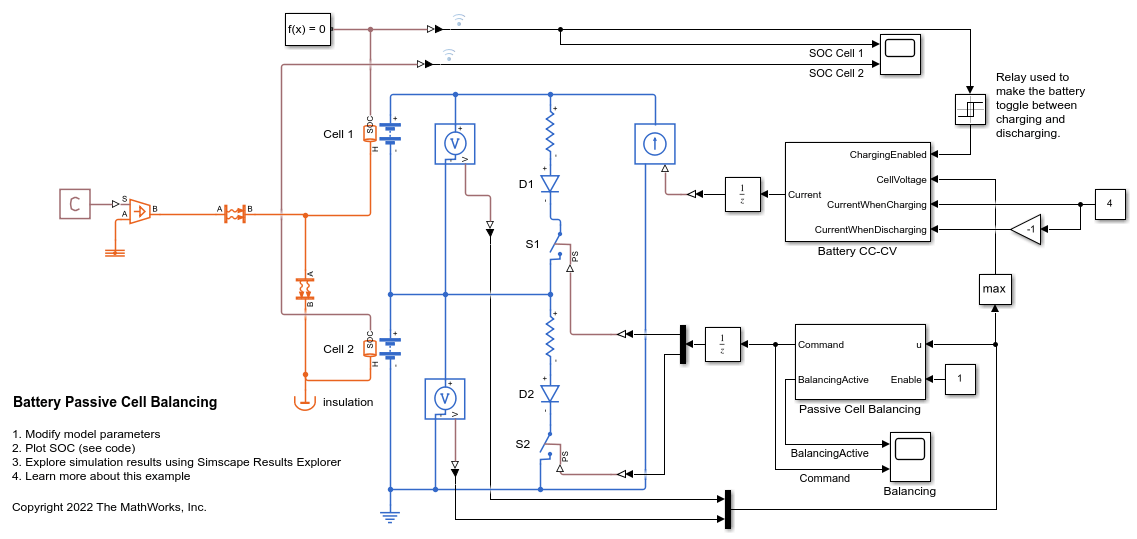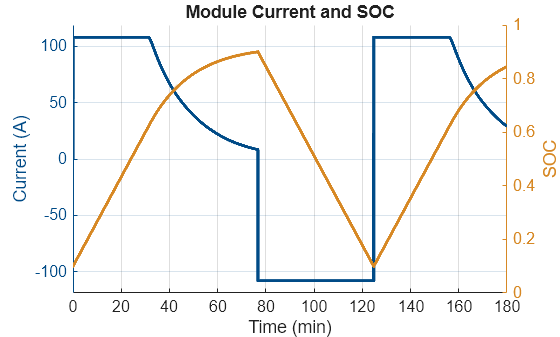Battery CC-CV
Libraries:
Simscape /
Battery /
BMS /
Current Management
Description
The Battery CC-CV block implements a constant-current (CC), constant-voltage (CV) charging algorithm for a battery. For a discharging battery, the block uses the value of the CurrentWhenDischarging input port. To implement a simpler version of the CC-CV charging algorithm with proportional control, see the CC-CV Charging (Proportional Control) block.
This block supports single-precision and double-precision floating-point simulation.
Note
To enable inherited single-precision floating-point simulation, the data type of all
inputs and parameters, except for the Sample time (-1 for
inherited) parameter, must be single.
You can switch between continuous and discrete implementations of the block by using
the Sample time (-1 for inherited) parameter. To configure the
block for continuous time, set the Sample time (-1 for
inherited) parameter to 0. To configure the block for
discrete time, set the Sample time (-1 for inherited)
parameter to a positive, nonzero value, or to -1 to inherit the
sample time from an upstream block.
Note
Continuous-time implementation of this block works only in a double-precision floating-point simulation. If you provide single-precision floating-point parameters and inputs, this block casts them to double-precision floating-point values to prevent errors.
This diagram illustrates the overall structure of the block:

Equations
This block implements the CC-CV algorithm in constant-current and constant-voltage modes. This figure shows the operation of these modes:

This equation defines the battery reference current that the block outputs:
where
vmax is the value of the Cell voltage threshold (V) parameter.
vmeas is the voltage of the highest cell.
Kp and Ki are the values of the Controller proportional gain and Controller integral gain parameters.





